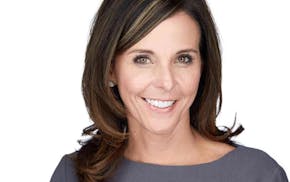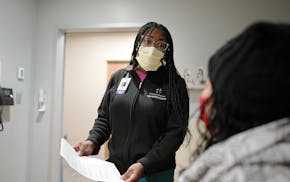There were a couple of undertold stories during the prolonged budget wrangling at the Minnesota Legislature that shaped the caregiving duties — for children and for elderly relatives — faced by many of the state's workers.
One failed the state's vulnerable, lowest-income preschoolers.
The Legislature provided about $500 million in one-time federal COVID-19 aid to child-care providers and an additional $1.2 billion for K-12 public schools, on top of earlier federal relief.
There was also was about $1 billion in tax cuts and about $1 billion in federal money being carried over to future years.
Yet, the Legislature unwisely declined to appropriate more money to ensure that the 35,000-plus lowest-income kids get at least two years of scholarships to use at accredited day care/early-learning providers to help prepare them for kindergarten.
The state provides about $70 million annually for such "Parent Aware" scholarships to cover qualifying families. And economic research has found that quality preschool education can help close Minnesota's yawning racial gaps in education and income.
About 20 years ago, economists determined that $1 invested in quality preschool for disadvantaged kids returns up to $16 to taxpayers. Kids who aren't ready for kindergarten cost the public disproportionately because they tend to drop out of school, get in trouble and fall short of their economic potential. They are disproportionately students of color.
"Despite historic levels of new resources available, and more than $1 billion in flexible federal funds still left unspent, Minnesota's most vulnerable young children weren't a top priority for legislators," said Ericca Maas, executive director of Close Gaps by 5, which advocates for early-learning providers.
She noted that since about one-third of children under age 18 are under age 5, about $330 million should have been targeted for early learning. "Unfortunately, Minnesota's poorest, and least served kids aren't as powerful … as the lobbyists who dominate public education policymaking," Maas said.
Hundreds of millions flow from the state annually to day care and early-learning providers. The main subsidy, Minnesota's Child Care Assistance Program, can benefit families that make up to $75,000. But it misses some of the poorest kids, including the homeless, those in foster care and child protection.
The session started out with promising bipartisan bills that would have significantly increased Parent Aware funding, from about $140 million over the two-year biennium. The time-tested Parent Aware-certified system awards scholarships for private centers as well as school-based centers.
Sen. Carla Nelson, a Republican from Rochester, and Rep. Carlie Kotyza-Witthuhn, DFL-Eden Prairie, introduced respective bills that would have covered the tab over the next two fiscal years for all toddlers at or below 185% of the federal income guidelines. That didn't make it to the Senate floor. Nelson, chair of the Senate Tax Committee, tried during 11th hour negotiations to double scholarship dollars to $280 million.
Walz took the position of the education lobby, which wants to control early learning. There also was a dispute over whether federal funds could be used. What should be a best-practice approach for the most vulnerable kids died on the altar of power politics.
On a more productive note, home health agencies and workers got a needed boost. The agencies that employ personal care attendants who assist Medicaid-insured disabled and elderly low-income Minnesotans in their homes got help from the state, following a decent pay hike for the attendants.
"This is a great result for clients, caregivers, agencies, and the public," said Andre Best, owner of Best Care and a board member of First Provider Alliance. "It will save lives, stop some companies from going out of business, raise worker wages, allow some overtime" and gives the industry financial stability over the next two years.
Earlier this year, the state agreed in a contract with the Service Employees International Union to raise the minimum wage from $13.25 to $15.25 by July 2022 for caregivers of 44,000 Minnesotans on Medicaid.
The just-passed legislation provides for a rate increase of 10% to the agencies in October that amounts to $236 million in incremental spending over four years. That will raise the reimbursement rate to employers to $19.60 an hour. The bill also renews the temporary "waiver" that allows parents and legal guardians and spouses to be paid for PCA services.
Last year, Minnesota and the feds through Medicaid spent about $775 million to cover 40,000-plus indigent Minnesota elderly and disabled in their homes. That's cheaper, at an average per patient of less than $20,000 annually, than nursing home care.
And a growing number of aides, in a business that has a worker-retention issue, are friends or relatives who can raise income caring for a loved one; relieving financial hardship for many caregivers.
This bipartisan work was carried in the House by Rep. Todd Lippert, DFL-Northfield.
Lippert collaborated for several years with Democratic Rep. Jennifer Schultz, a University of Minnesota-Duluth economist, and the late Republican Sen. Jerry Relph, a lawyer from St. Cloud, on the issue. This year's accomplishment was a bipartisan tribute to Relph, who died last year of COVID-19.

St. Anthony: 'Patient' investing paying off for St. Paul's Hill Capital

Jennifer Smith, leader of Burnsville's Innovative Office Solutions, has died

St. Anthony: Medical professions in Minnesota need more people of color in their ranks



